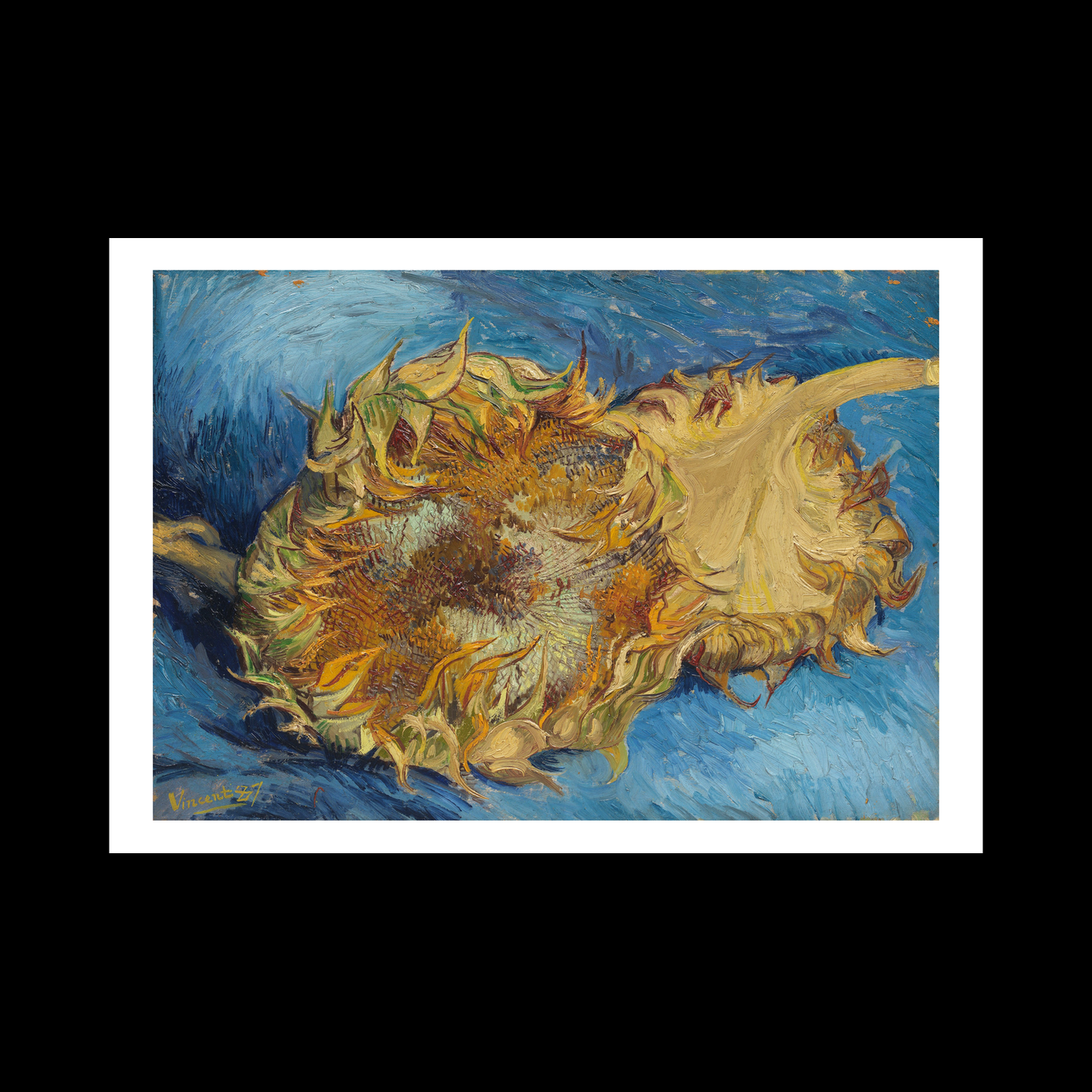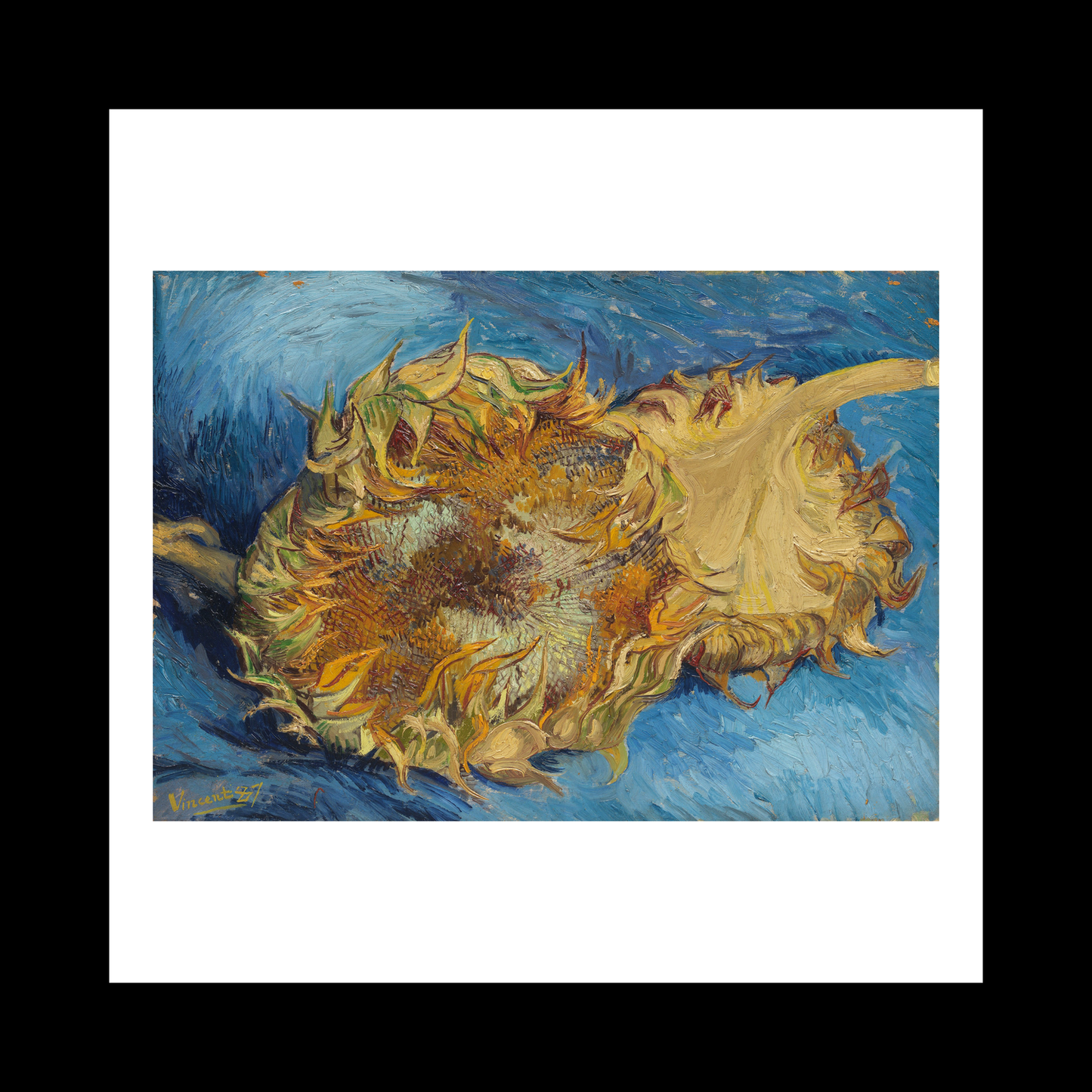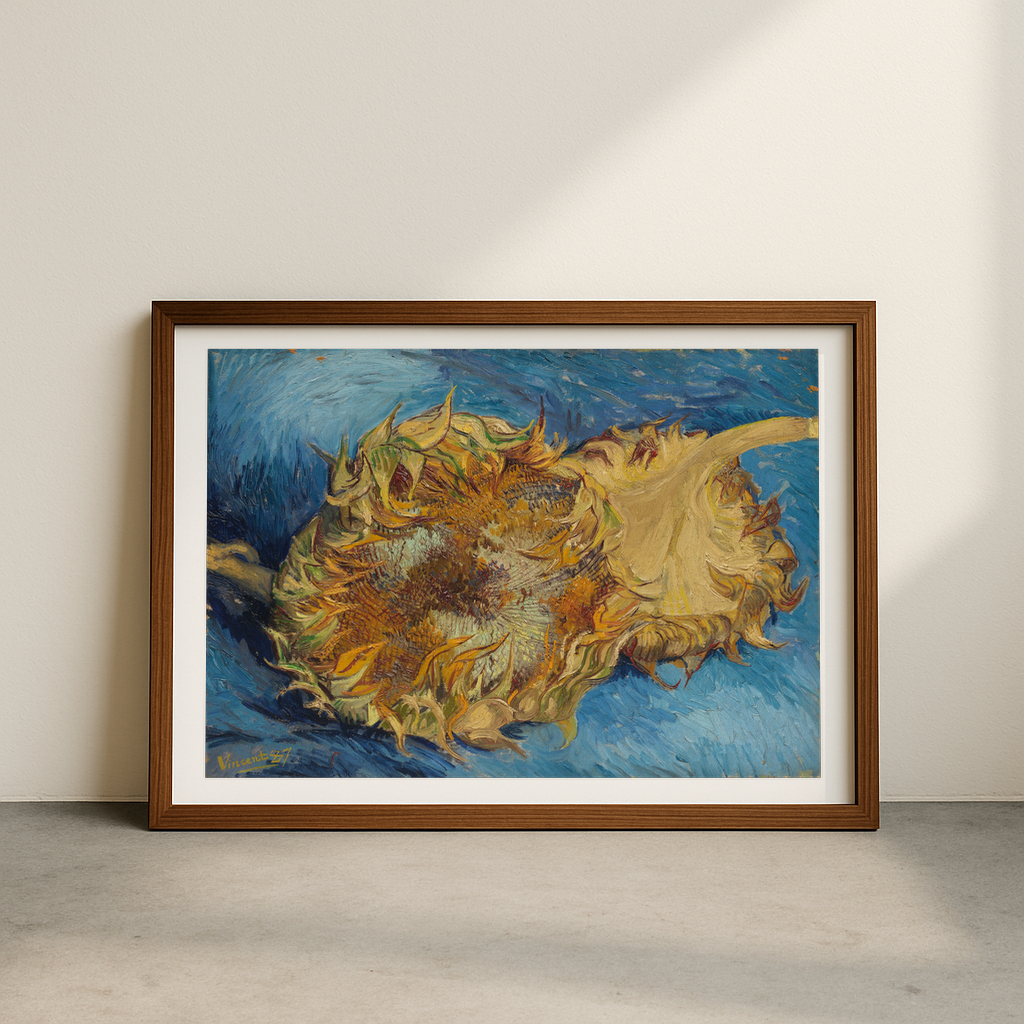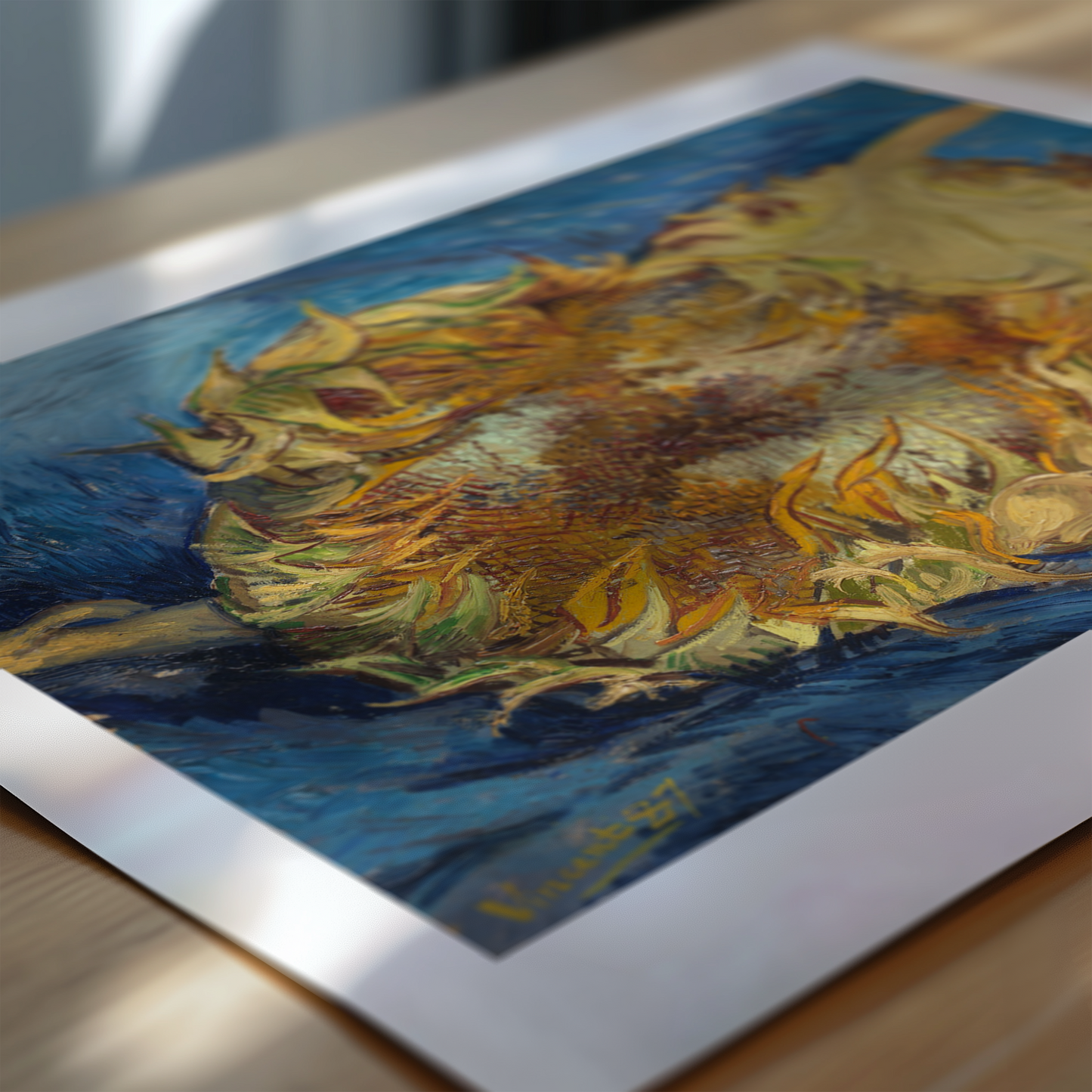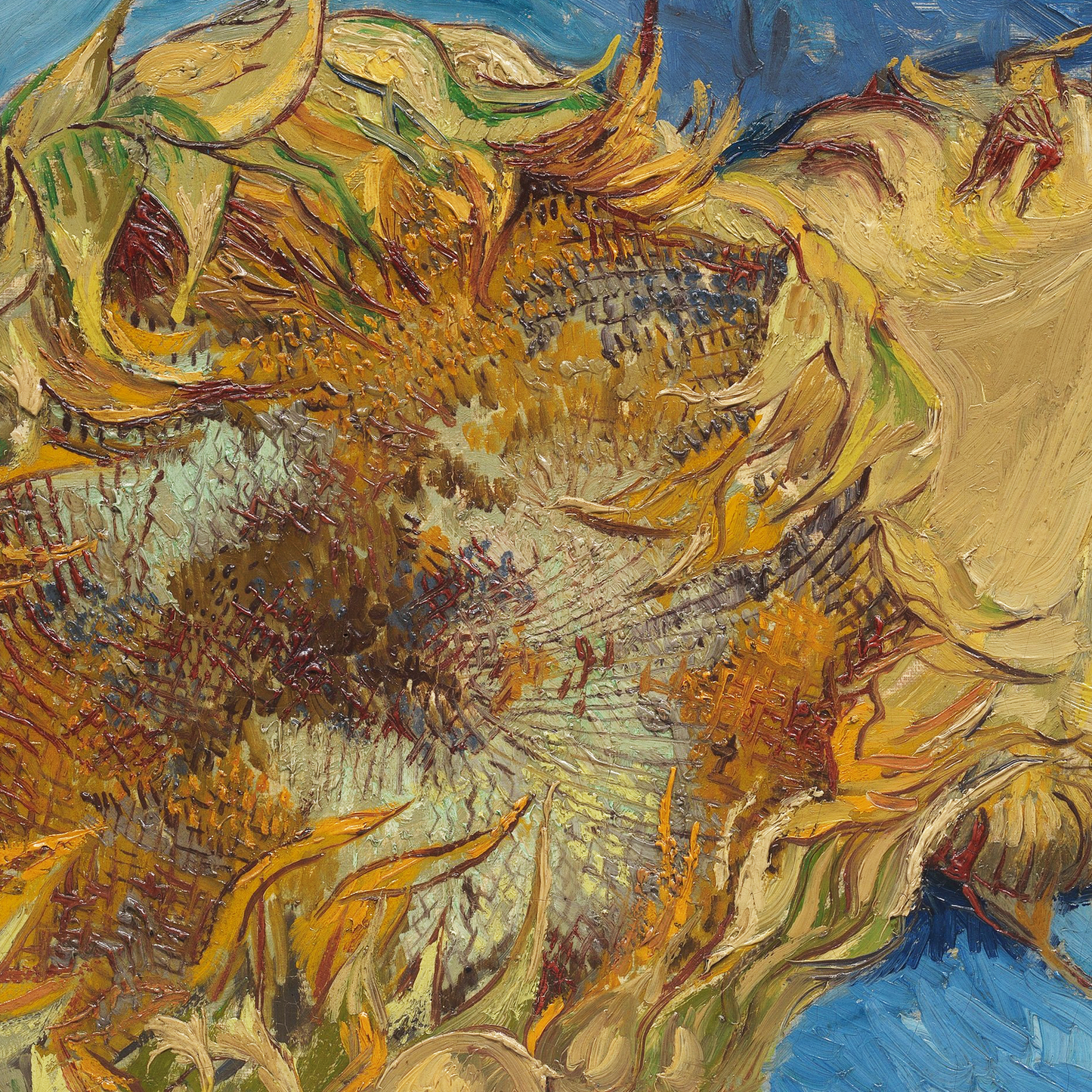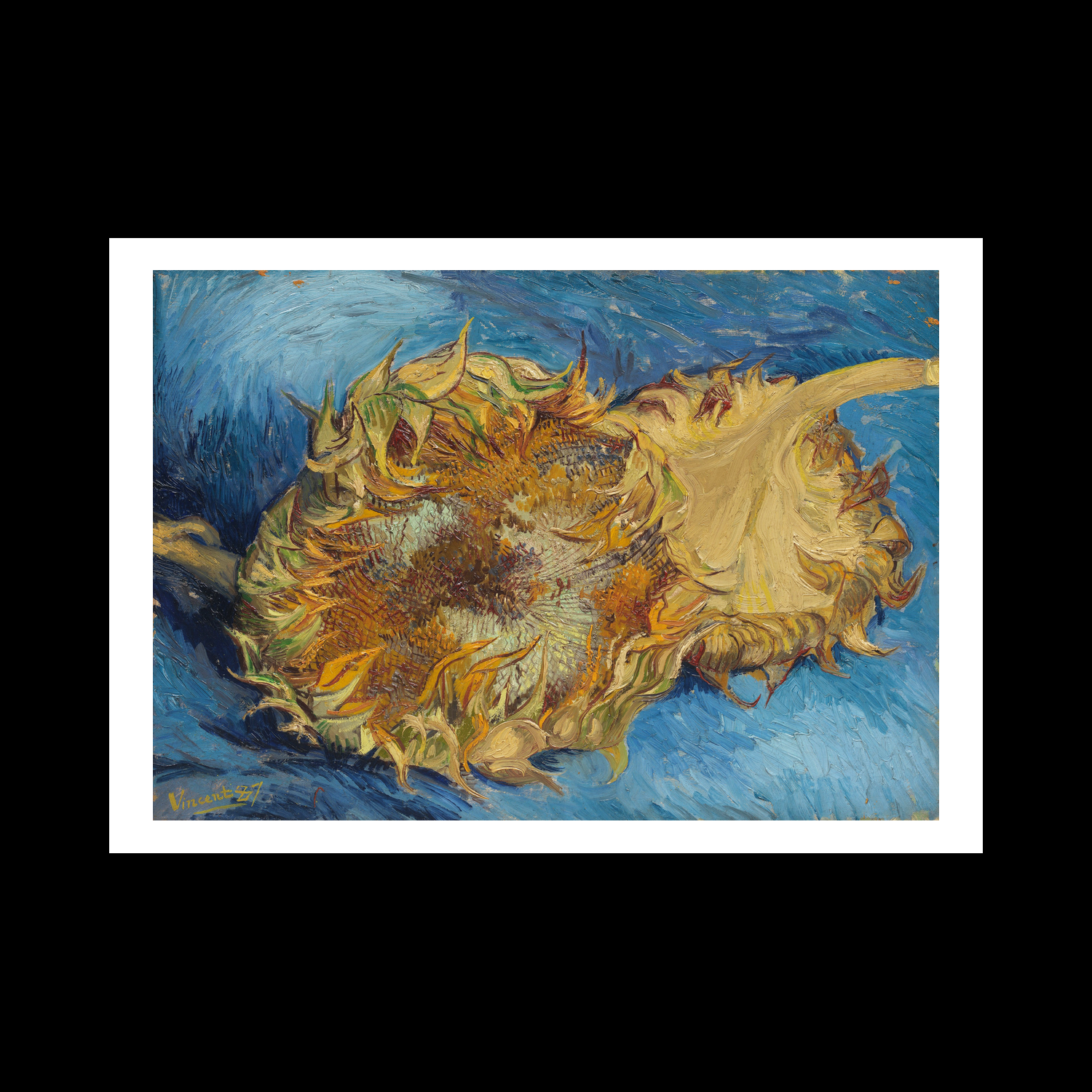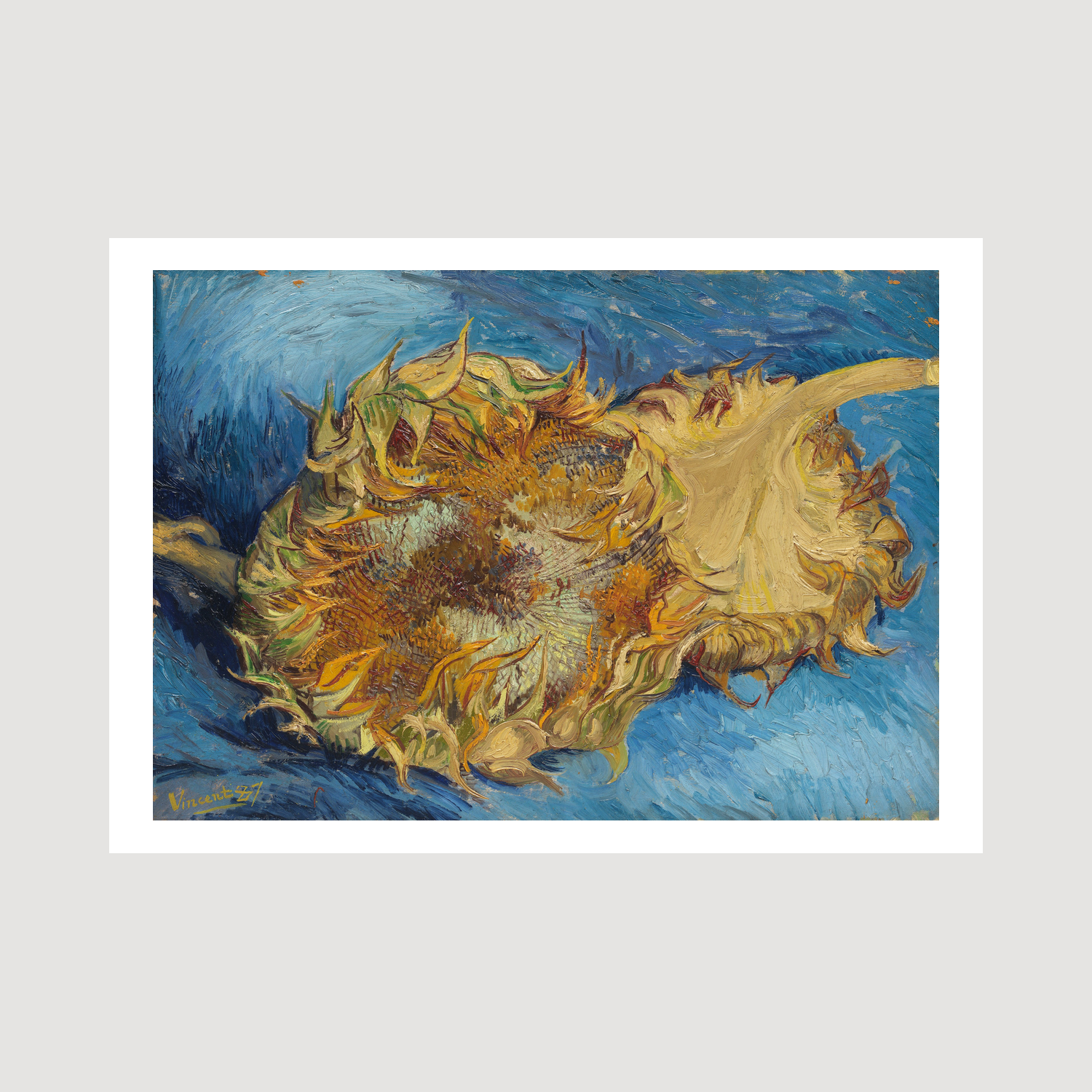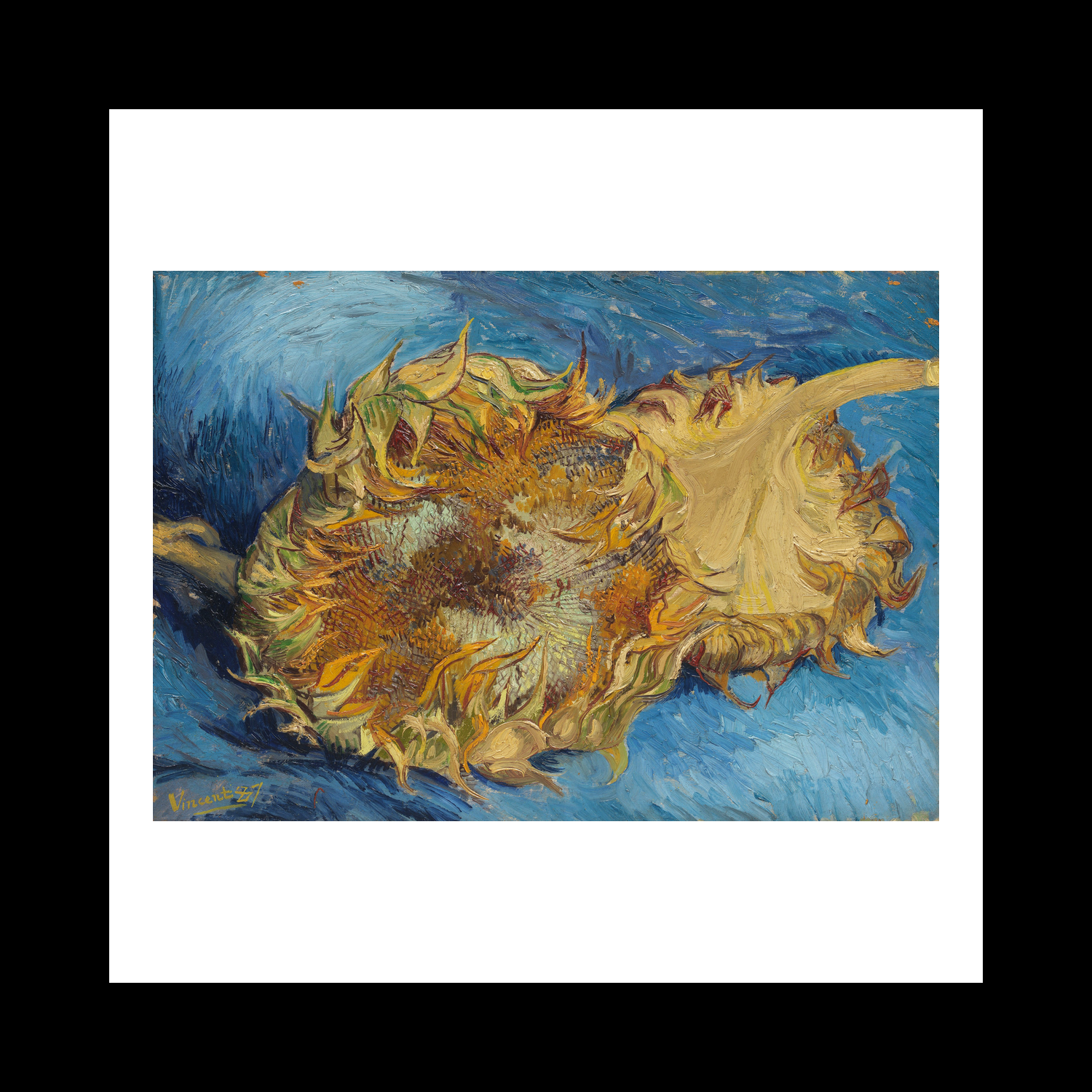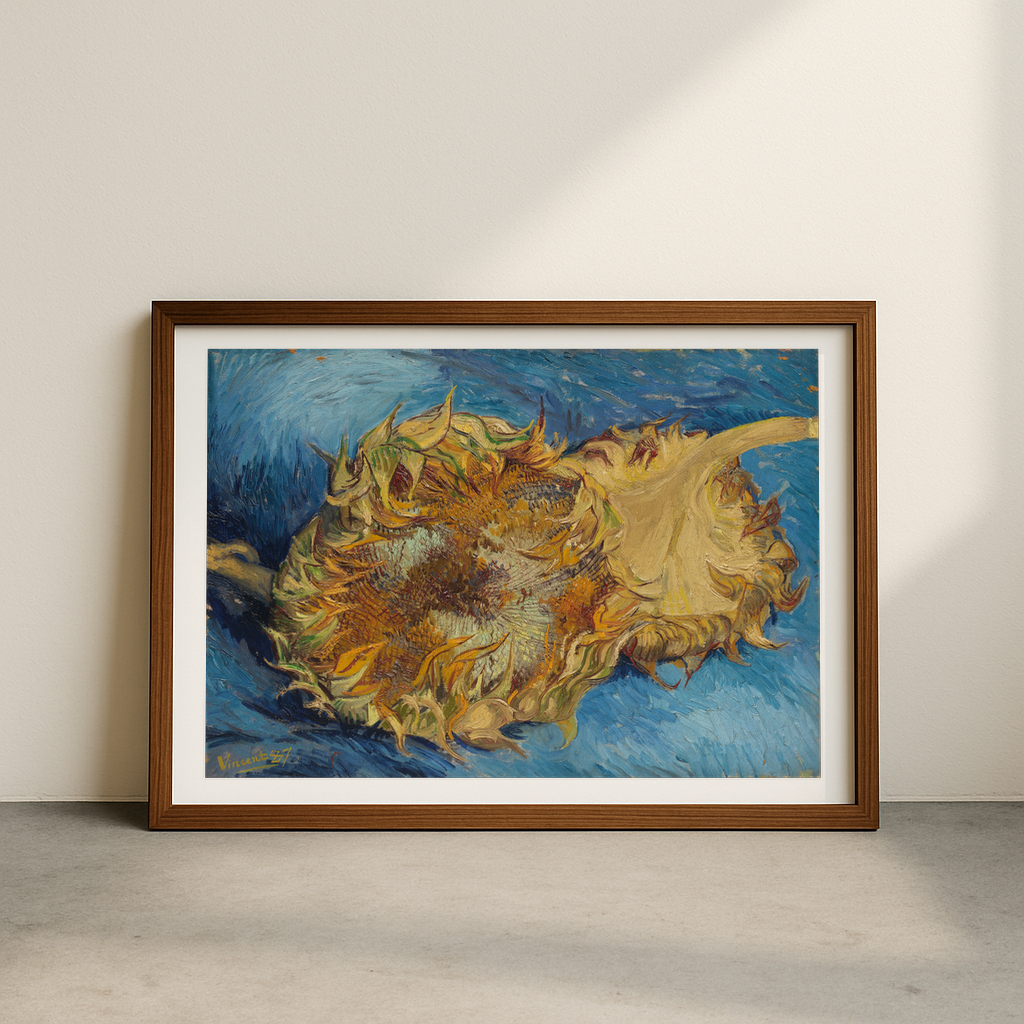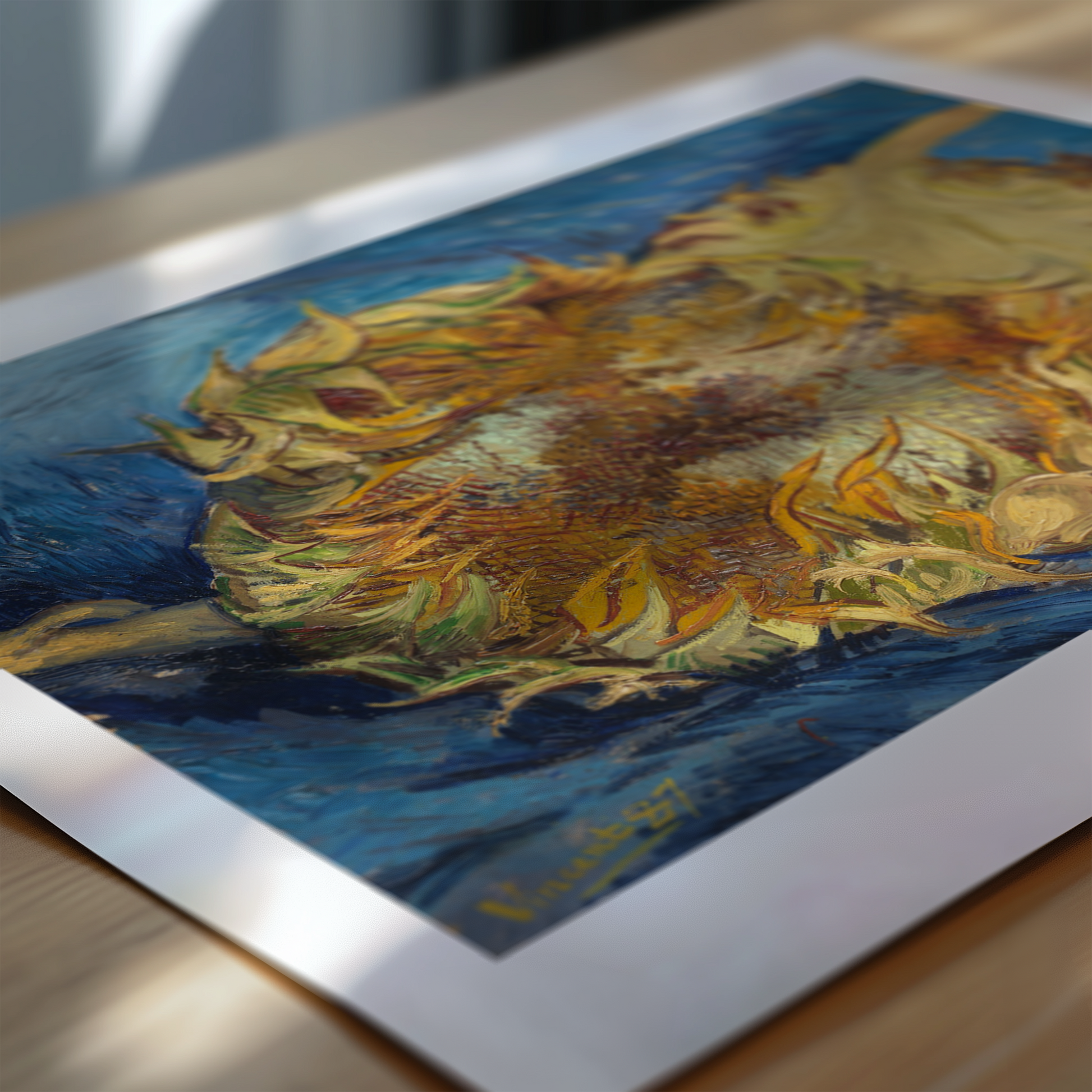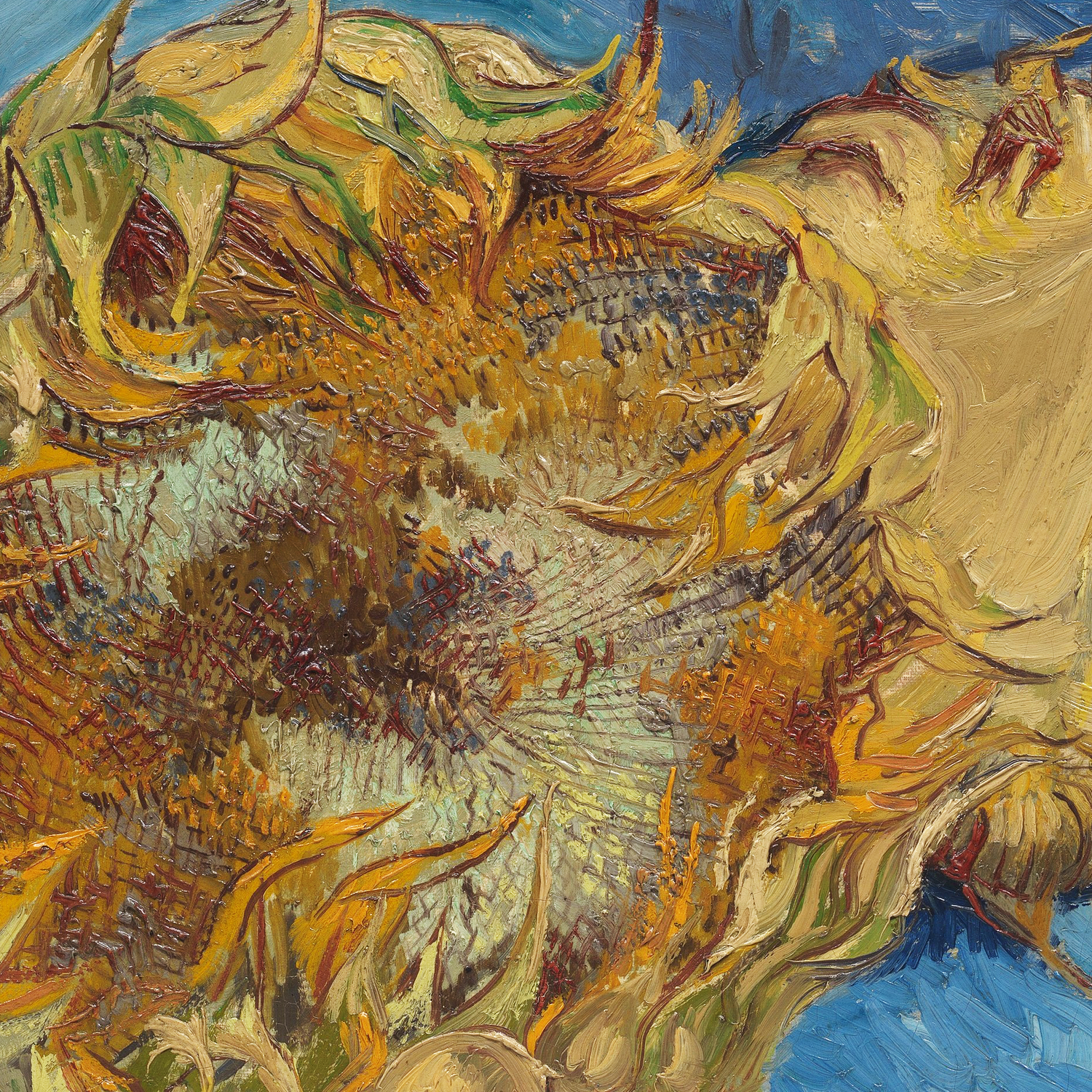1
/
of
6
Sunflowers (1887)
Sunflowers (1887)
Regular price
£12.45 GBP
Regular price
Sale price
£12.45 GBP
Taxes included.
Quantity
Couldn't load pickup availability
Van Gogh's 'Sunflowers' (1887) stands as one of several variations in his celebrated sunflower series, painted during his time in Arles, France. The vibrant yellow blooms, set against a yellow background, create an intense monochromatic study that showcases Van Gogh's mastery of colour and emotional expression. The thick, impasto brushstrokes and bold outlines characteristic of his post-impressionist style bring the flowers to life, with each petal and seed head rendered in meticulous detail.
What makes this work particularly fascinating is Van Gogh's choice to paint the flowers in various stages of life - from fresh, upright blooms to withering, drooping heads. This decision reflects his deep connection to nature's cycles and his own emotional state during this period. The artist created these paintings to decorate the room of his friend Paul Gauguin, whom he hoped would join him in establishing an artists' colony in Arles.
The technical aspects of the painting reveal Van Gogh's innovative approach to colour theory. He employed multiple shades of yellow, from chrome yellow to yellow ochre, creating depth and dimension in what might otherwise have been a flat composition. The work was completed during one of the most productive periods of Van Gogh's life, when he was exploring the expressive possibilities of colour with unprecedented intensity. His use of complementary colours and thick application of paint revolutionised the way artists approached still life painting, influencing generations of artists to follow.
View full details
What makes this work particularly fascinating is Van Gogh's choice to paint the flowers in various stages of life - from fresh, upright blooms to withering, drooping heads. This decision reflects his deep connection to nature's cycles and his own emotional state during this period. The artist created these paintings to decorate the room of his friend Paul Gauguin, whom he hoped would join him in establishing an artists' colony in Arles.
The technical aspects of the painting reveal Van Gogh's innovative approach to colour theory. He employed multiple shades of yellow, from chrome yellow to yellow ochre, creating depth and dimension in what might otherwise have been a flat composition. The work was completed during one of the most productive periods of Van Gogh's life, when he was exploring the expressive possibilities of colour with unprecedented intensity. His use of complementary colours and thick application of paint revolutionised the way artists approached still life painting, influencing generations of artists to follow.
